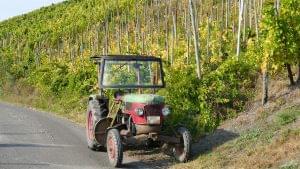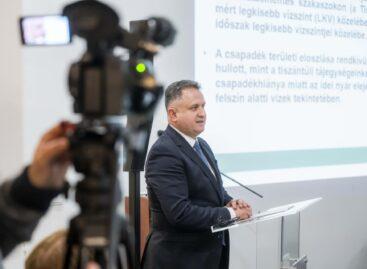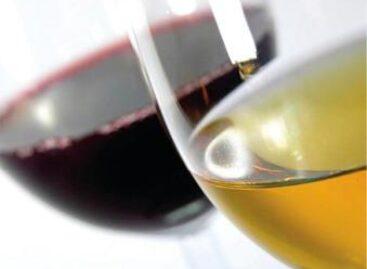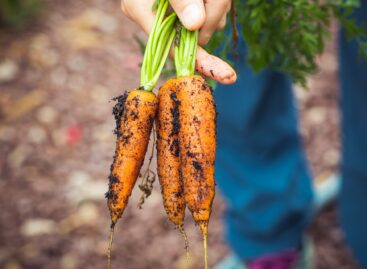The Common Agrarian Policy Strategic Plan provides substantial help for grape production
This year is two-faced: the price explosion of energy and input materials, the historic drought left a serious impression on agriculture. Despite this, in the first half of the year, despite all the difficulties, investments and agricultural exports also increased by a quarter compared to the same period of the last period – Zsolt Feldman evaluated the months left behind us at the XIII. Martin’s Day New Wine Festival.

(Photo: Pixabay)
The Secretary of State responsible for agriculture and rural development of the Ministry of Agriculture spoke at the Soltvad Garden event in Bács-Kiskun County, stating that according to the yield estimate of the National Council of Mountain Communities, a grape harvest of 4 million másas can be expected in 2022, from which 2.6-2.8 million hectoliters of wine can be expected. In the EU’s largest wine-producing countries, this year’s wine production is expected to be lower than average. Higher grape purchase prices would be greatly helped by two things: if the large purchasing wineries sold wines of the highest value on the export markets, of which more would inevitably be returned to the producers, and if the producers would create their producer integration organizations, which through joint sales could achieve better conditions and prices they can achieve on the market – said Zsolt Feldman.
Kunsági is the country’s largest wine region
Most of the vineyard renewal takes place here, so the wine region’s plantations are being renewed, which was also helped by the subsidies provided to the grape sector. Regarding the subsidies, it was said that, in accordance with the practice of previous years, between November 2 and November 30 this year, it is again possible to submit individual plans for the support of the restructuring of vineyards. This support remains the most popular measure among grape growers. Due to increased interest, the amount of support available between 2019-2023 has increased from the previous 34 million euros to 50 million euros.
A key issue for grape production is mechanization and technological renewal, in order to replace the workforce and increase efficiency
That is why 2,296 producers successfully applied for the purchase of the machines and tools needed to care for plantations in 2021 and have received HUF 27.2 billion in support so far. In addition to these, the government has so far supported 2,618 producers with HUF 193 billion for precision developments related to the digital transition of agriculture – which in the case of vineyards means, for example, the purchase of power machines, grape harvesters and other work machines. The state secretary called organization important for grape and wine producers as well, as he said, joint sales are also an opportunity for grape producers, even within the framework of mountain communities. As a good example, he mentioned the already proven joint producer sales form in the dairy industry, with the help of which they can be in a more effective position in negotiations with buyers. Zsolt Feldman said that at the beginning of this week, the European Commission adopted the Strategic Plan of the new Common Agricultural Policy, thereby approving the professional conditions for awarding subsidies between 2023-2027. Based on these, Hungarian agriculture can be renewed with about HUF 5,300 billion. The state secretary detailed the support sources available to grape growers and winemakers, their total amount and the conditions for awarding. As he said, there is an extraordinary resource for the development of the agriculture and food industry, which, if used well, can achieve further significant progress in the Kunság wine region as well.
A.M
Related news
The government supports the grape and wine sector with targeted subsidies
🎧 Hallgasd a cikket: Lejátszás Szünet Folytatás Leállítás Nyelv: Auto…
Read more >Chamber of Agriculture: 10 percent more new wine was produced this year than last year
🎧 Hallgasd a cikket: Lejátszás Szünet Folytatás Leállítás Nyelv: Auto…
Read more >Layers of problems
🎧 Hallgasd a cikket: Lejátszás Szünet Folytatás Leállítás Nyelv: Auto…
Read more >Related news
OKSZ: Retail margin cap has lost its purpose – government decision due in February
🎧 Hallgasd a cikket: Lejátszás Szünet Folytatás Leállítás Nyelv: Auto…
Read more >Dietitians recommend more conscious protein consumption
🎧 Hallgasd a cikket: Lejátszás Szünet Folytatás Leállítás Nyelv: Auto…
Read more >New Year, Clean Start: Here’s Why You Should Eat More Organic Food
🎧 Hallgasd a cikket: Lejátszás Szünet Folytatás Leállítás Nyelv: Auto…
Read more >






